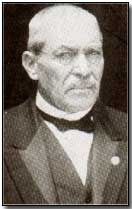Encyclopedia - The Tampico Incident
 The Tampico Incident of
April 1914, which ultimately almost led to the outbreak of war between the
U.S. and Mexico, began with the arrest of nine American sailors from the
U.S.S. Dolphin on Mexican territory - Tampico - for allegedly
entering a prohibited area.
The Tampico Incident of
April 1914, which ultimately almost led to the outbreak of war between the
U.S. and Mexico, began with the arrest of nine American sailors from the
U.S.S. Dolphin on Mexican territory - Tampico - for allegedly
entering a prohibited area.
Consequently paraded through the streets of Tampico the plight of the U.S. sailors outraged the regional U.S. naval commander Admiral Henry Mayo. He demanded that the Mexican government, under the dictator General Victoriano Huerta since his coup in February 1913, promise to punish the officials involved in the arrest of the seaman, and that the U.S. flag be given a formal 21-gun salute on Mexican land within 24 hours.
While the Mexicans were willing to issue an apology and punish over-zealous local officials they were not prepared to concede the humiliation of formally saluting the U.S. flag on Mexican land (particularly as the U.S. refused to accept the legitimacy of Huerta's government). U.S. President Woodrow Wilson was nevertheless insistent, exasperated by what he regarded as the latest in a line of Mexican incidents.
There was no love lost between Wilson and Huerta. The former had unambiguously declared Huerta to be "false... sly... full of bravado... seldom sober and always irresponsible" and a "scoundrel". Huerta in turn regarded Wilson disdainfully as the "puritan of the north".
Consequently Wilson spoke before the U.S. Congress on 20 April 1914 and requested authorisation to use military force if necessary to resolve the issue. He argued that "the incident cannot be regarded as a trivial one, especially as two of the men arrested were taken from the boat itself - that is to say, from the territory of the United States". Congress granted its permission some two days later.
Wilson responded by despatching a force of U.S. marines to the Mexican port of Veracruz, an action that led to the overthrow of Huerta. Wilson felt his actions to be justified but came under fire from European governments for his supposedly heavy-handed approach (notably from Germany).
Huerta's departure from the Mexican capital was not however the end of the matter. Festering Mexican ill-will towards the U.S. was fanned by the despatch of a telegram by the German government (as represented by Arthur Zimmermann) in January 1917 - the so-called Zimmermann Telegram - in which he intimated that Mexico would gain the possibility of annexing U.S. territory were it to join Germany in a combined campaign against the U.S.
Although the U.S. was at that stage neutral in its attitude to the warring powers in Europe, British interception - and transmission to Washington - of Zimmermann's telegram effectively decided Wilson to go to war with Germany in April 1917.
A Kite Balloon was an observation balloon controlled by a cable from the ground.
- Did you know?
